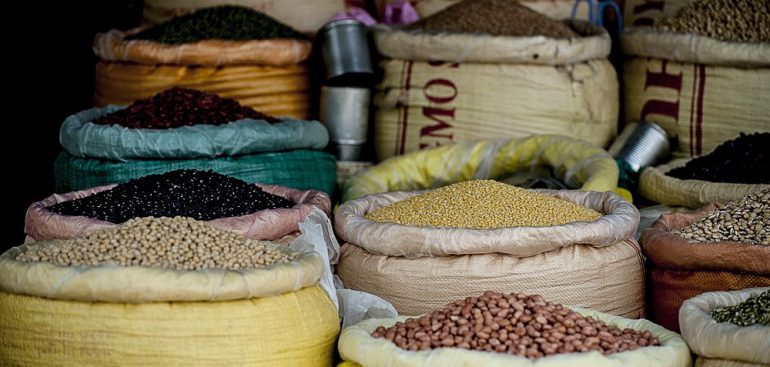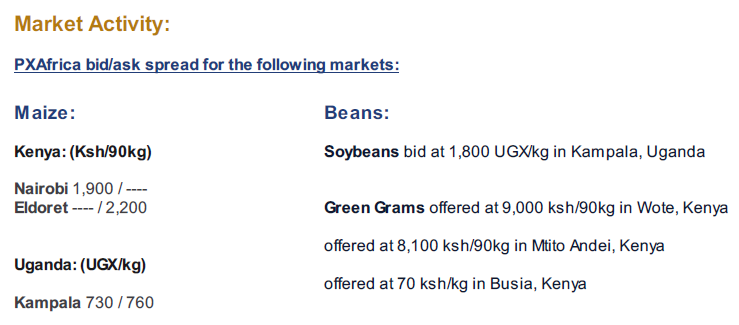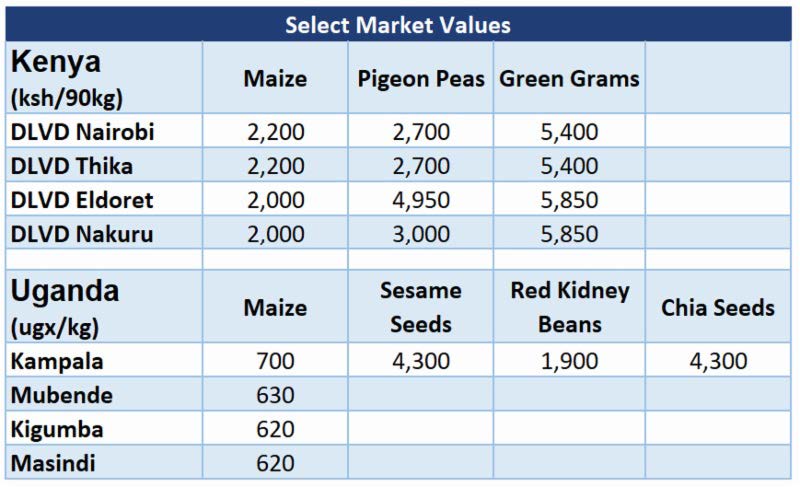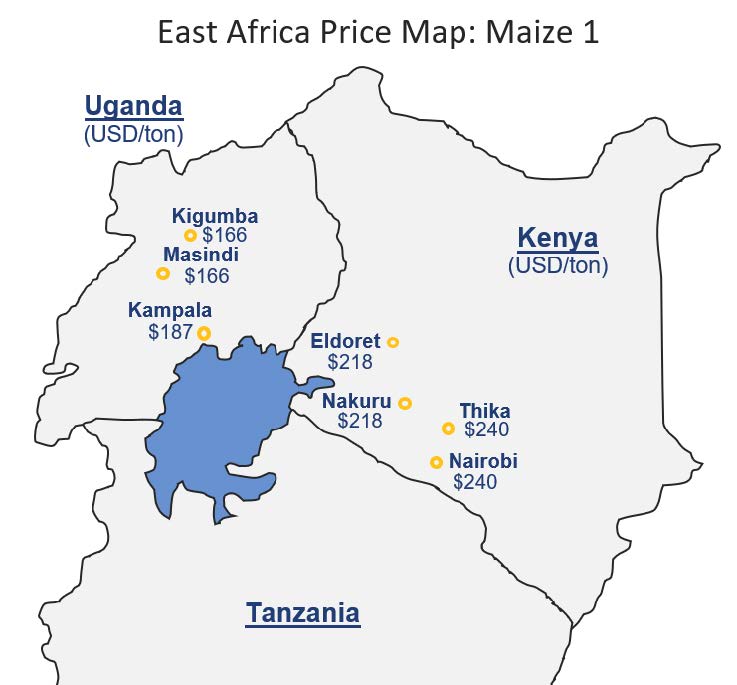Africa News
Market Update 01-09-19
Kenya:
Maize prices have been relatively stable in Kenya to start the new year as the commodity is trading at Sh 2,200 /90kg in Nairobi and Thika and has increased to Sh 2,000 /90kg in Eldoret and Nakuru. The value of pigeon peas and green grams have also remained consistent over the past few weeks. Pigeon peas are trading at Sh 2,700 /90kg in Nairobi and Thika, while green grams are trading at Sh 5,400 and Sh 5,850 in Nairobi and Eldoret respectively.
Uganda:
The price of maize has increased to start the new year and is trading at UGX 700 /kg in Kampala, UGX 630 /kg in Mubende, and UGX 620 per kilogram in Kigumba and Masindi. The new maize crop has started coming into the capital however most of the grain contains high moisture content. The current prices are expected to rise in the coming weeks as increased export demand from Kenya is predicted in February and March.
Nambale bean prices are currently being quoted in the range of UGX 1,900 and UGX 2,000 in the Kampala area. The current prices are expected to remain relatively consistent as it has been reported that most of the beans have been harvested and entered the market. As for other commodities, chia seeds are still available in the Kampala market and are trading at UGX 4,300 while planting has begun in Northern Uganda for green grams ahead of the May harvest.
East Africa Trade:
Uganda has exported more goods in terms of value to Kenya than any other country in the EA region for the period of January through September 2018. Compared to 2017, the monetary value of exports has risen 65% to Sh 1.5 trillion primarily driven by the trade of maize. According to the Kenya Revenue Authority, Uganda has accounted for approximately 70% of Kenya’s maize imports for the period, representing over 4.6 million 90-kilogram bags. For the same period, Tanzania and Rwanda’s exports to Kenya remained relatively consistent at Sh 820 billion and Sh 499 billion respectively. In terms of the EAC, aggregate imports for the region have decreased slightly to Sh 3.2 trillion compared to Sh 3.21 trillion the year prior, continuing the trend dating back to 2015.
Maize Lethal Necrosis Disease:
Occurrences of the Maize Lethal Necrosis Disease (MLND) have been on a significant decline in East Africa over the past three years. Recent data reveals that from 2015 through 2018, new cases of the disease have decreased from 65% to 35%, 43% to 29%, and 25% to 11% in Kenya, Rwanda and Tanzania respectively. Further, according to plant pathologist Johnny Masangwa of Malawi’s Ministry of Agriculture, Malawi has shown to be free of MLND for the past three years.
MLND is caused by a combination of two viruses, often transmitted by maize thrips, rootworms and leaf beetles and tends to effect areas where maize is continuously being grown and can be enhanced in periods of drought. Common symptoms of MLND include dying leaves, malformed or no ears, rotting cob and the failure for the plant to tassel.
While occurrences of MLND have been on a significant decline due to disease-free seeds and field hygiene, it is important to remain attentive to the health of crops. East Africa is not yet free of MLND as new reports show signs of the disease in eastern parts of Uganda, meaning maize farmers in western Kenya should especially be careful. According to Boddupalli Prasanna of the CIMMYT, it is important that signs of MLND are managed quickly to avoid an upsurge of MLND in the future.





